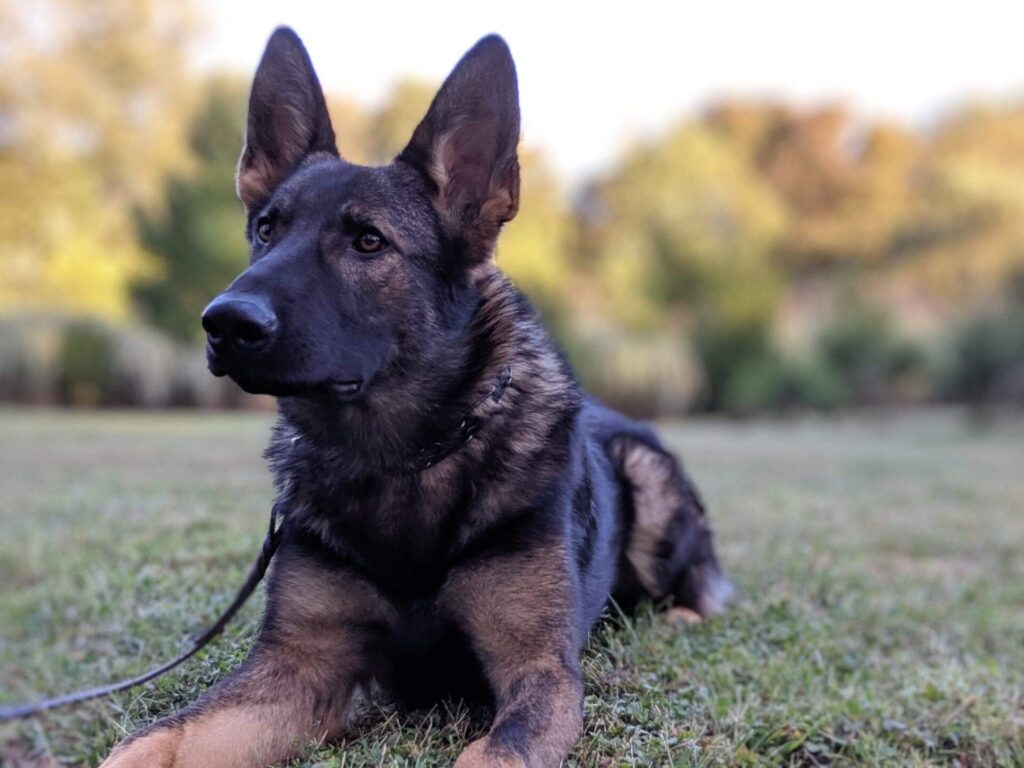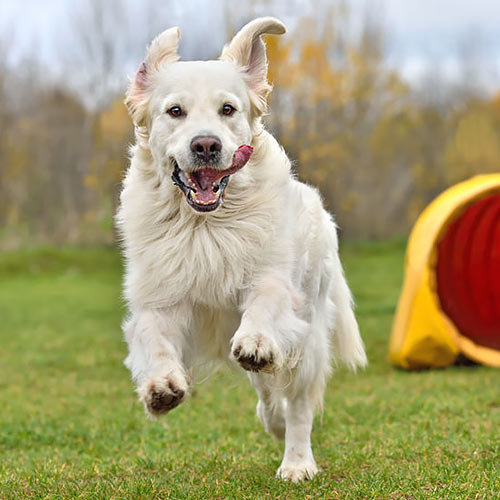There is probably more variety among the various bloodlines of the German Shepherd Dog than any other breed. There are obvious differences in body structure and aesthetics. But the largest difference is the temperament.

Some will disagree with the following statements and that’s ok. The article is an attempt to give insight for those who are seriously interested in the German Shepherd. It is written by a 30-year student of the breed who has bred and trained GSDs for nearly that long as well. As with most any breed, breeding is everything. The dog’s pedigree shapes the dog. So here’s a frank look at some bloodlines within the breed. Yes, there are good breeders and good dogs within each bloodline.
American Line
Shepherds from American breeding are typically taller and longer than those from Germany. Although there is a breed standard from the parent club, there is little-to-no oversight as what dogs can be bred. As long as they are fully registered, they can breed. Few American GSDs meet the American standard, especially the temperament section. As a result, the almighty dollar and the show ring has created a “German Shepherd” that is different from those in the rest of the world (British breeding being the closest). Health problems plaque these bloodlines as well, more so than quality European lines. The American shepherd is not required to pass a temperament test, any kind of endurance testing, and is not required to be free of dysplasia.
The biggest difference in the American line is the temperament. Most American GSDs have no job, mainly due to their lack of working ability. They are not required to use the brain and the emphasis is more on a pretty trot in the show ring. Because of this softness, they cannot work and but are generally easier to control.
American shepherds still have the desire of protectiveness but without the clear head that keeps them from being fear-biters, nervous, or aggressive. Most of them do not have the courage to do true protection work (or police work) and are easily defensive and almost always skiddish.
The differences among the American bloodline is considered by many around the world to be a separate, inferior breed. As a general rule, American Shepherds are a far cry from the real deal. Unfortunately, many people in the USA only know of this kind of dumbed-down version of the true Shepherd dog and consider it as normal. We assure you, it is not.
West German Show Line
These dogs are known for their black/tan or black/red saddle pattern. They are usually darker in color than American dogs and their back is roached (i.e, forming an elongated inverted “u”, for lack of a better way of saying it). Their temperament is not as strong as von Stephanitz (the father of the breed) originally idealized. They are easier to control than true working line dogs.
The SV (German registry) requires breeding dogs to have clearances for hips and elbows and a working title along with their show title. As a result, this line is generally healthier than American lines, but usually not as solid as the bloodlines we have yet to talk about. West German lines have little-to-no real emphasis on working. Their Schutzhund trials are limited to themselves with few/no outside lines. To allow a true shepherd to compete in these trials would reveal the deficiencies within this line. Some within this line do make good workers but it is much harder to find true, consistent working dogs in this line.
West German Working Line
These dogs are the closest to those bred by Max von Stephanitz. They are true workers which are used in protection/police/military needs around the world. They have the brains and nerves to do a real job. This line, as a general rule, has less health issues than the others.
Breeders within this line aim for working ability, not show-ring quality. They have nice body structure suitable to perform a working function. Generally, they possess balanced drives and good nerve. They also make awesome family pets, without aggression, shyness, or fear. They tend to be energetic and therefore do best in an active home. Their colors are usually bi-color or sable.
These working lines are usually smaller, more agile, and can put in a full day’s work. They tend to mature faster which gives them a longer working life. They usually have a high pain tolerance. They are able to withstand pressure from a “bad guy” and stay in the fight until the suspect is subdued. They are stronger in this aspect but are also trainable, if bred according to Stephanitz’ standards.
These dogs have a love for work, have high energy, are loyal and confident. They are more environmentally sound, i.e. not stressed out with environmental situations such as gunfire, loud noises, traffic and more. However, it is also true that this line produces dogs that are smarter than many dog owners and therefore can be, at times, harder to control.
When people envision a loyal, confident, awesome GSD, this is the bloodline they dream of, whether they know it or not – color probably being the only exception.
East German – DDR
During and after World War II, East Germany was called Deutsche Demokratische Republik, hence the name DDR.
DDR dogs were strictly regulated by the government of East Germany. This kind of stringent control of breeding specimen produced a very unique look in the breed. DDR dogs typically have larger heads, large bones, and dark pigment, and many are bi-color.
DDR dogs were bred for border patrol work. These dogs have filled capacities in police, military, and security work around the world. They are usually stable dogs with low to medium prey drive. However, their defense drive is typically higher and they are generally wary of strangers. Some can be harder for most people to control.
After the fall of the Berlin Wall in 1989, breeding standards in this area of the world were softened and breeders were given more freedom. Many breeders within this line tend be to moving away from working ability with a greater emphasis on beauty. Poor breeding within this line has caused low drive and poor nerves, although many still make good family dogs.
Czech/Slovak Working Line
This line was also produced for border patrol work in communist Czechoslovakia. Some of the dogs within these bloodlines have solid working drives that are intense and agile. They are usually more slender and more streamlined than DDR dogs. They range in color from bi-color to sable.
Czech dogs became more common in America in the late 1990s. At that time, many of these dogs had bad hips and poor temperaments. They were definitely harder to control. However, within the last 20 years their drives have improved, they are more social, and have a greater trainability than previous years. Their hips have improved as well. A good, contemporary Czech shepherd possesses a nice balance in prey and defense.
Be informed about what line of German Shepherd will best meet your needs. If you want a laid-back dog, do not get a working-line Shepherd. Probably an American line or West German line would be best for you. If you’re wanting a working dog for police work, Schutzhund, security, or personal protection, you’ll definitely need to purchase from a working line. If you want a stable temperament, the German and/or Czech working line is your best bet. If you are concerned about overall health, stay away from show lines.
Admittedly, there will be those who disagree with this article. Our attempt is not to be offensive but rather to help sort through the malaise of misinformation and ignorance concerning the German Shepherd Dog.
Also, we have very solid dogs available. We pride ourselves on breeding stable temperaments, neither shy nor aggressive. We have dogs for family pets and others to fulfill working capacities – law enforcement, sport, security, SAR, HRD, and more. Check our For Sale page to see availability.

